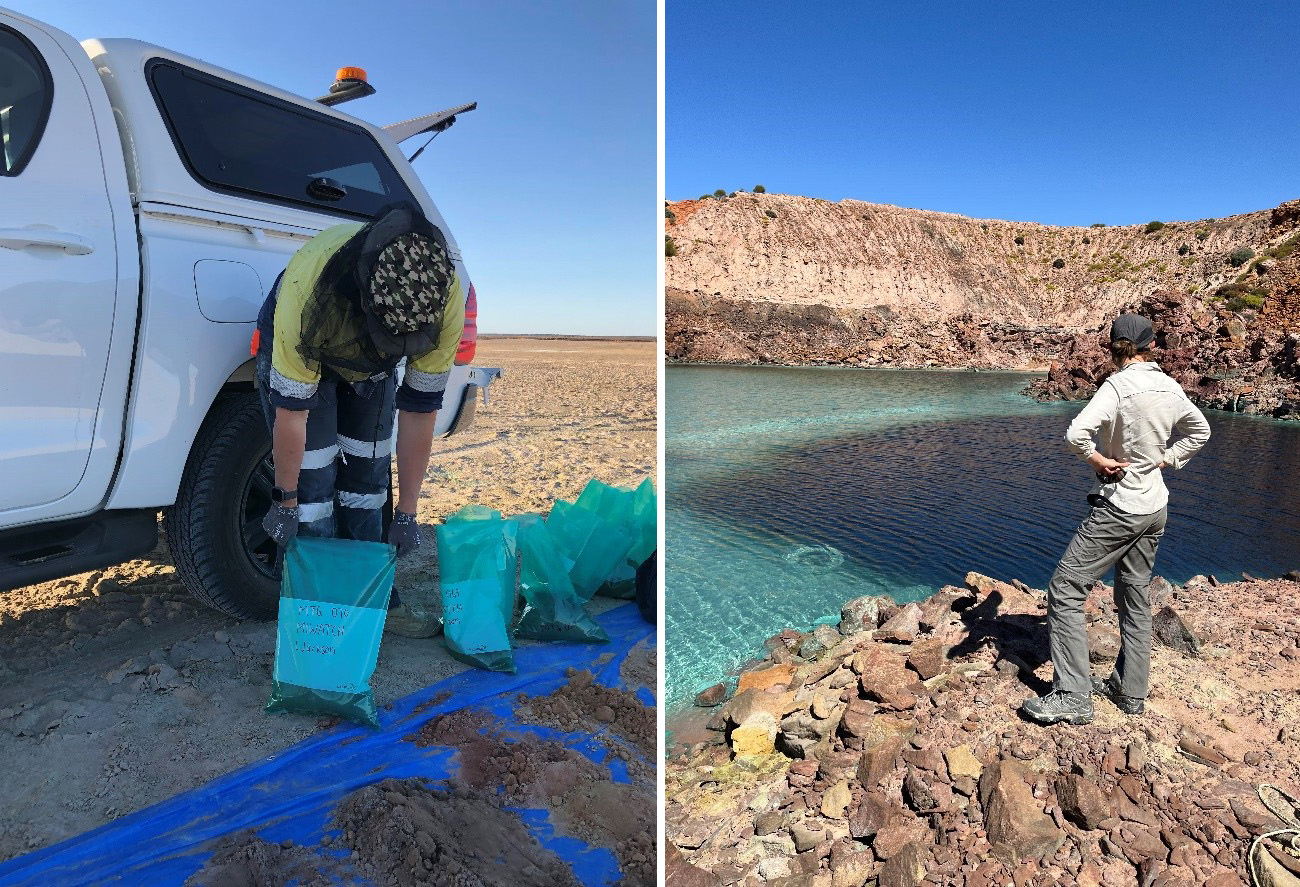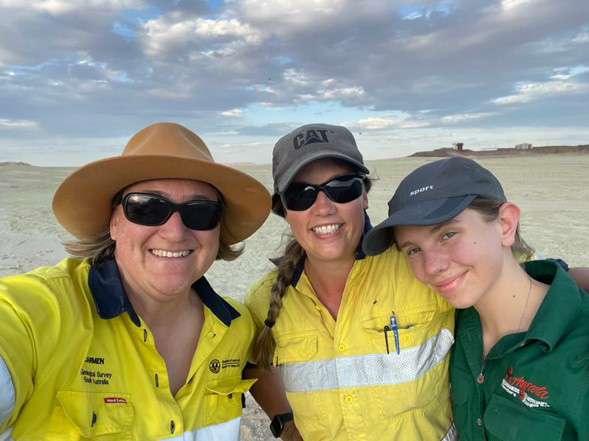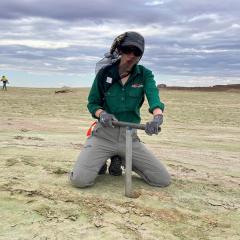Exploring Mount Gunson: My first Honours Field Trip
Lina Toben is an honours student at the University of Adelaide who is undertaking her thesis with the MIWATCH team.
Approximately 500 kilometres North of Adelaide, expansive layers of copper-salts define the borders of three substantial tailings dams; 7.4 Mt of by-product of Cattle Grid, the most endowed of the four open cut deposits mined here, at Mount Gunson, between 1875 and 1989. The mine has lain dormant since 2006, prior to which, significant volumes of copper and cobalt were extracted within a 130 year period.
I was first introduced to Mount Gunson four months ago, at which point I was stubbornly determined that my main honours project focus would be the economic viability and benefits of tailings reprocessing. It made sense: above all else, the waste potentially contained historically overlooked minerals such as cobalt – now critical to our net zero carbon emission future. Moreover, I felt by concentrating on the economic prospects, I could justify the significance of my project on a global scale. How much mine waste is still useful? How much of the minerals industry can be supported by recycling?
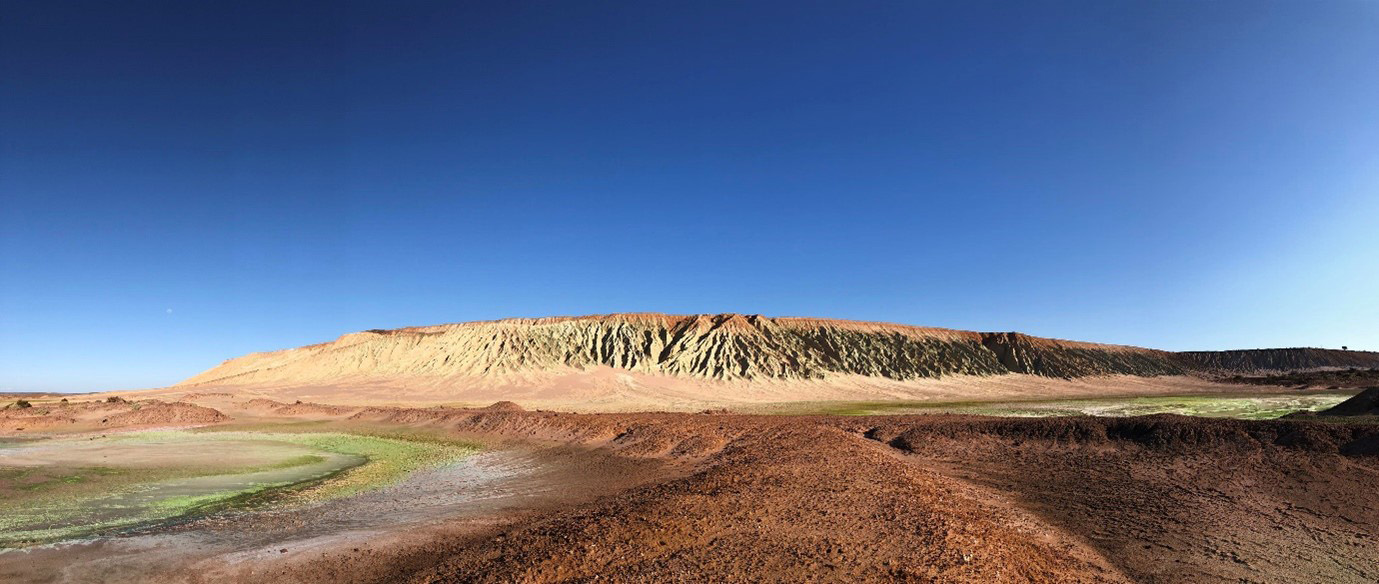
The Geological Survey of South Australia (GSSA) in collaboration with Geoscience Australia have engaged the MIWATCH team to exploring SAs mine waste, with 4 sites to be targeted. I had the pleasure of doing my honours at one of sites in this exciting program, Mt Gunson. In the last week of September, Dr Laura Jackson and I made our way up to site, with the aim of coring two 6-meter holes a day from each of the three tailings dams.
After a quick stop in Port Augusta (special mention to the ingenious and locally famous double-cut roll - a roll cut down the middle not once but twice (!) in order to fit double the ingredients – for powering Laura through the rest of our long drive) we made it to site. Here, Brenton Musolino graciously gave us a tour of the mine, including Cattle Grid, and the infamously green leach ponds below the dam wall.
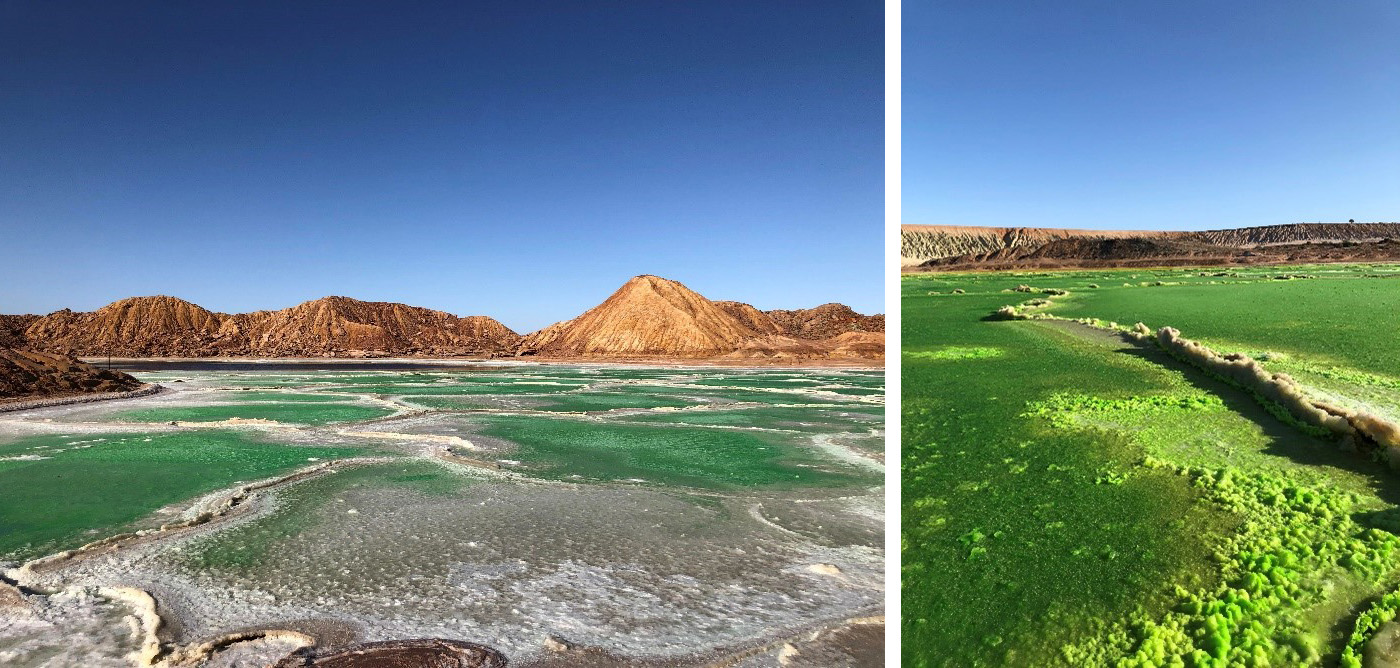
Over the next three days, and with the help of Dr Carmen Krapf, we worked tirelessly with the hand-auger, coring not the originally planned six, but eight holes!
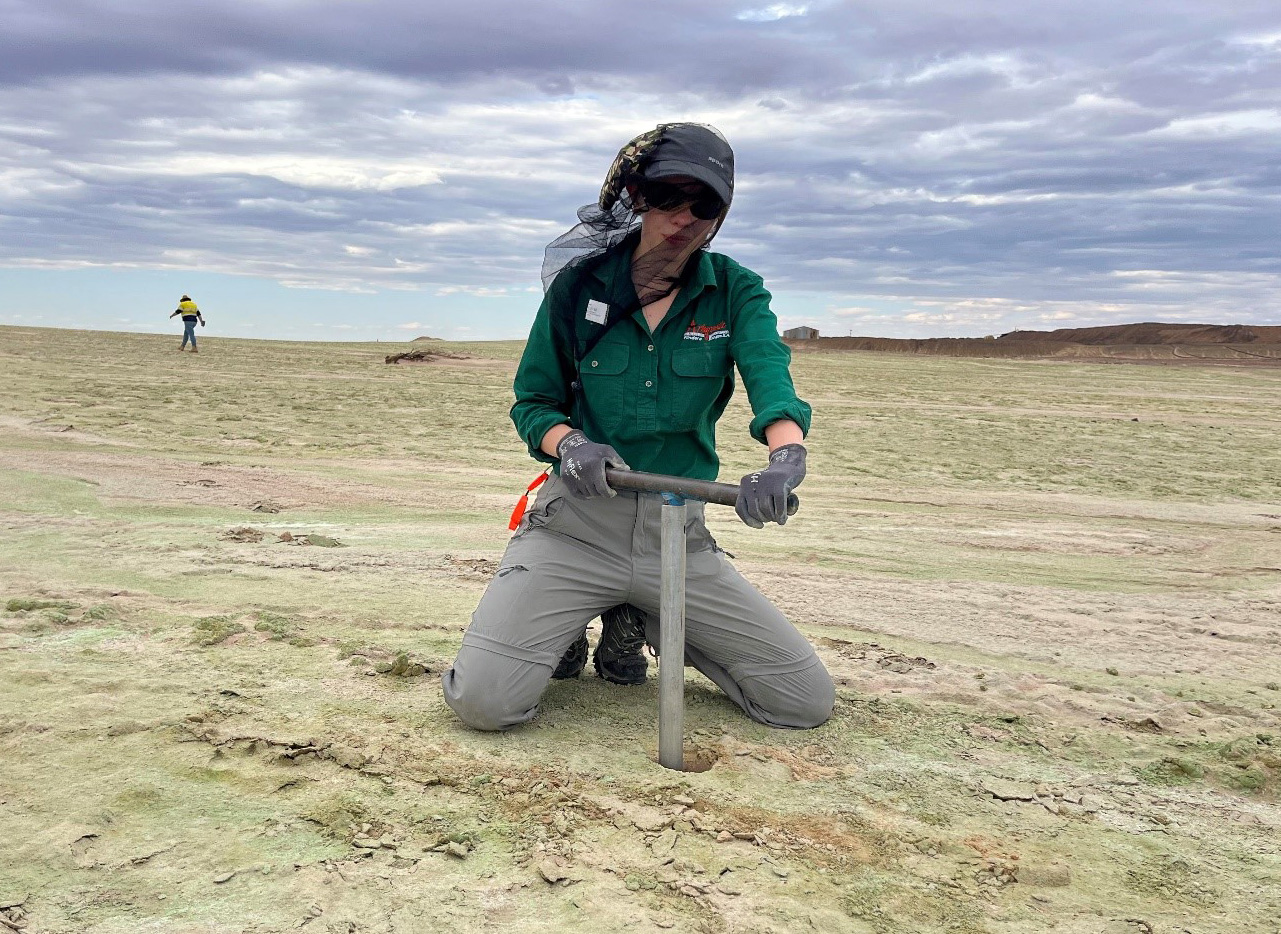
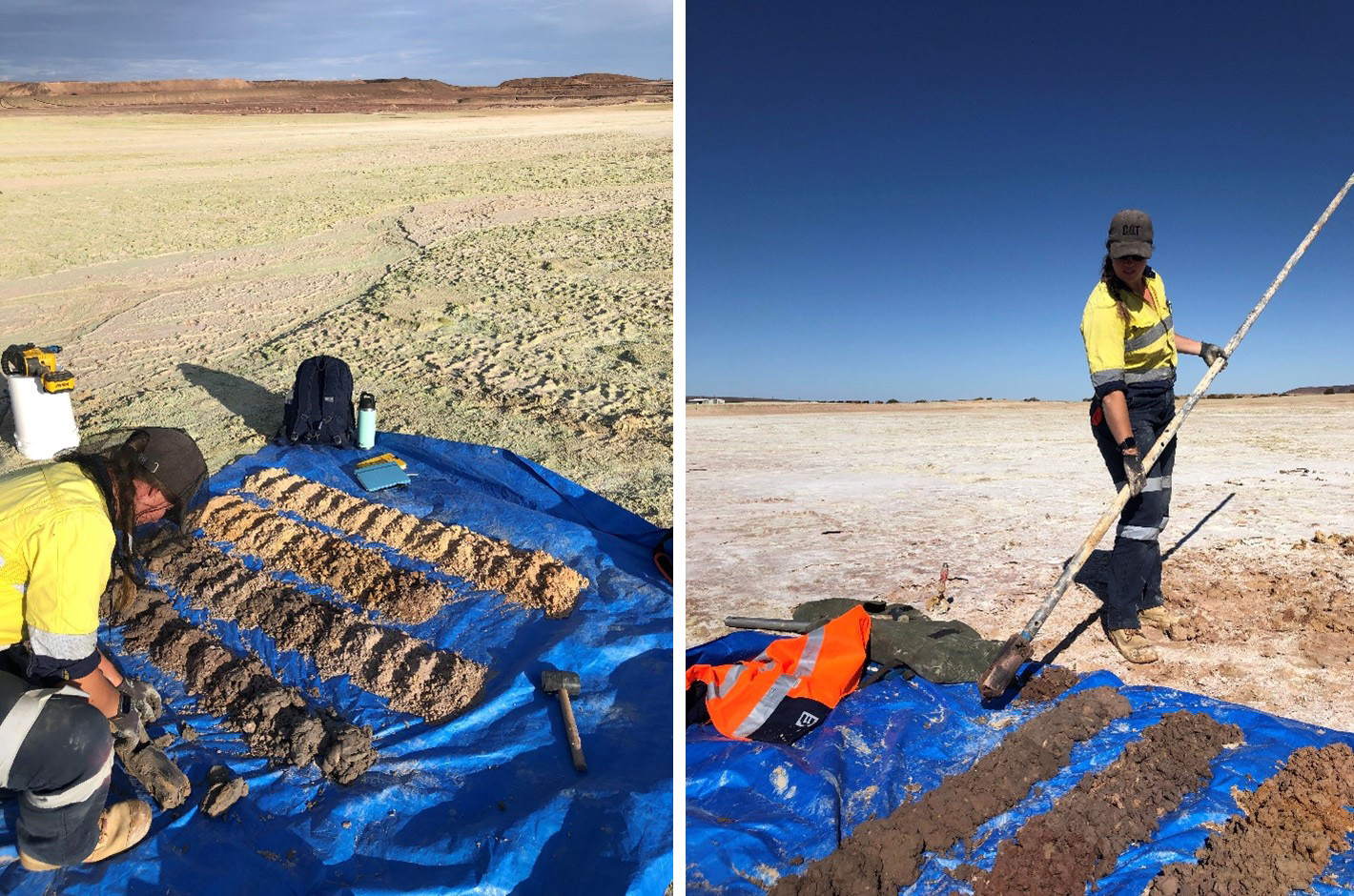
Between holes, I’d take some time to explore the area. I was struck by the changing landscapes we had seen in our initial tour of the property.
South of the tailings, nearer to Cattle Grid, a freshwater lagoon was surrounded lush greenery, and provided refuge to swans, emus and lizards. This was in stark contrast to the barren waste-land only a few 10s of kilometres away. This was more than a question of economic opportunity. Reprocessing the tailings here, as well as all other mine sites has significant, multidimensional outcomes – not only for the renewable and technologies industries, but for the environment and Indigenous communities.
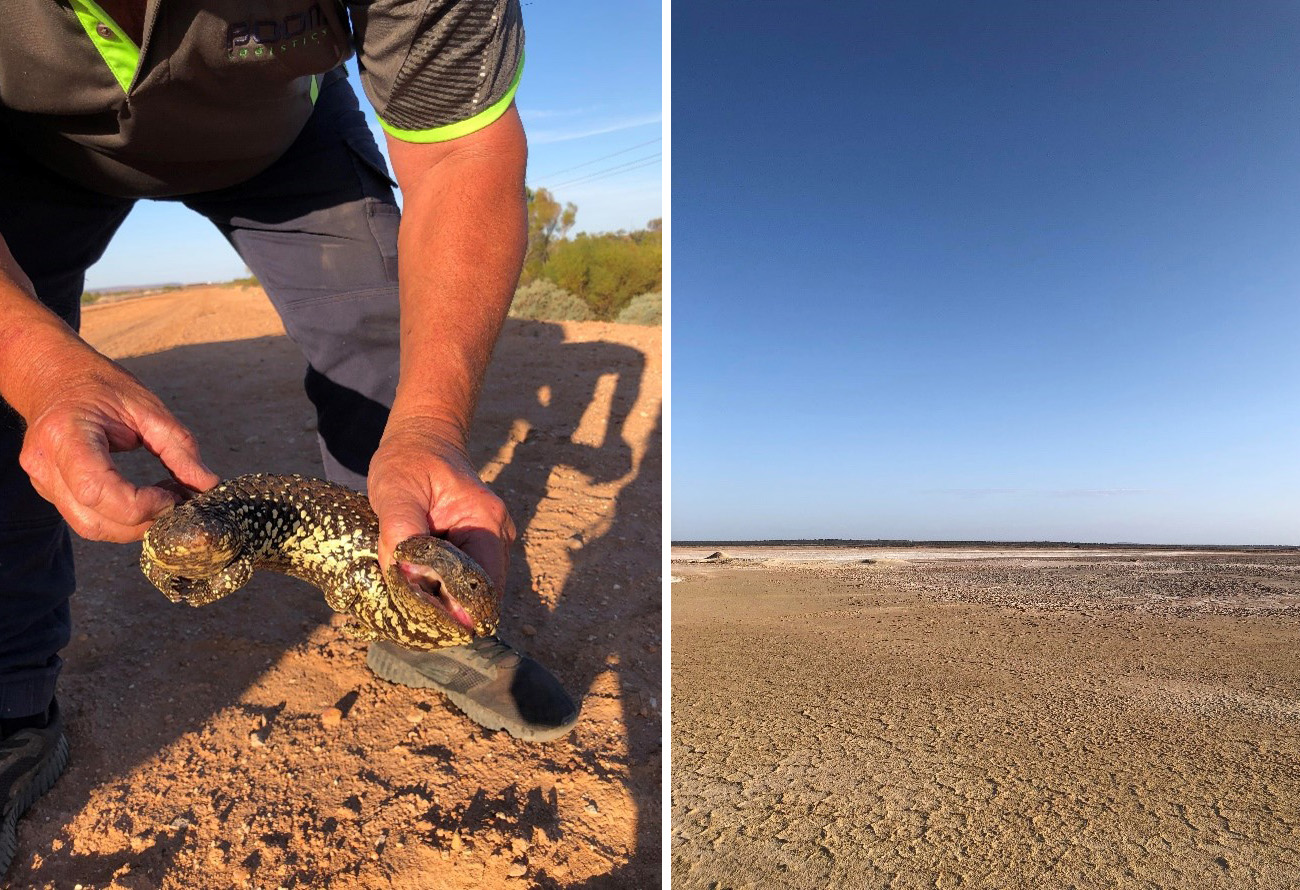
During sampling, we were visited by Andrew, a member of the Kokatha people, whose occupation extends across Western South Australia, covering a number of mine sites including Olympic Dam, Carapateena and Mount Gunson. In the brief time we had to talk, Andrew told us of the deep and sacred connection the Kokatha people have to the land we stood on; stretching back centuries, and still evidenced today by remains of Aboriginal dwellings and tools. He stressed the importance of the Mount Gunson region to the indigenous community, and the urgent nature of a remediation project.
By Friday, our short venture was up, and my project aim had been changed entirely. I was inspired by the land and motivated by the number of different voices and perspectives involved in addressing the tailing situation. Being able to go to site as part of my honours project has been an extremely rewarding experience, allowing me to gain my own perspective and shift the focus of my thesis.
As anything in life, and any mine, there is not one solution for the issues of Mount Gunson. We can’t clean up the entire mine. We can’t make the waste disappear. However, having the opportunity to contribute in such an important milestone of a way has so far been extremely rewarding for me. I am very excited to see how I can continue to connect the ecological, indigenous, economical and global perspectives together to reach the best outcome for the land and the community. And of course – I’m very excited to see what my samples hold!
Thank you to Laura for being such a great field team leader, to Carmen for all your help in the field and endless geological knowledge, to the Musolino family and Chrissy for hosting us, and to Anita and the MIWATCH team - you’ve already made my honours experience unforgettable.
